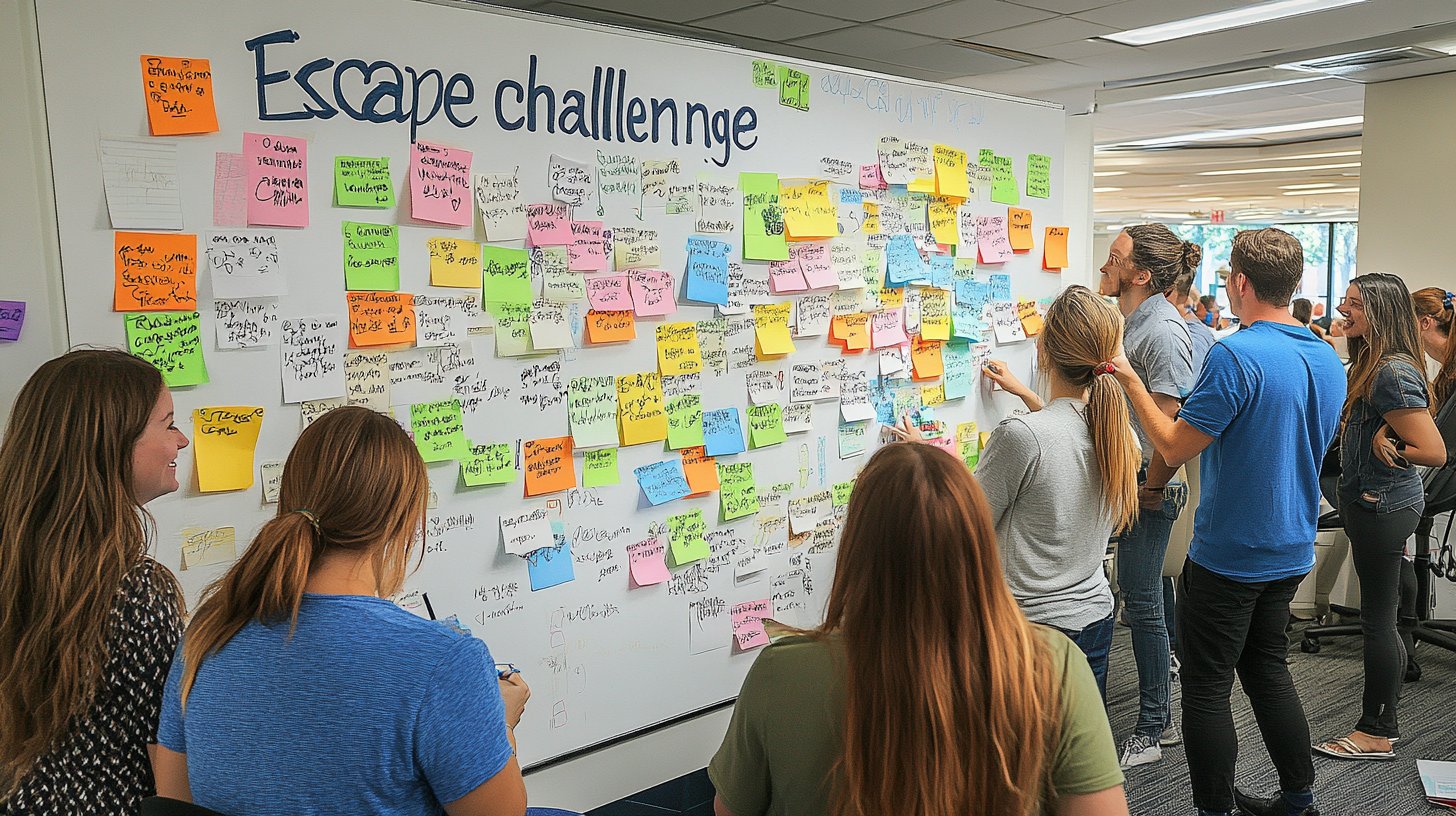Recreating a positive dynamic within your team is a common challenge. You may notice tensions, decreased engagement, or a lack of collaboration. These situations, while frequent, weaken cohesion and hinder productivity. Faced with these obstacles, you seek concrete solutions to revive team spirit and sustainably motivate your employees.
Team building offers powerful levers to achieve these goals. When well-designed, it strengthens bonds, improves communication, and establishes a climate of trust. Each activity, whether fun or strategic, can become an opportunity to unite your team around a common project.
Learn how to identify the specific needs of your team members and select the right activities to transform tensions into opportunities. You’ll find practical advice and concrete examples to reignite collaboration and restore the energy your team needs.
The Importance of Team Cohesion
Team cohesion plays a central role in the success of projects. United teams, where each member understands their responsibilities and shared objectives, work more harmoniously. This leads to effective communication and better collaboration.
A cohesive team thus turns challenges into opportunities. Internal communication improves, reducing misunderstandings and increasing productivity. Team building activities foster these positive dynamics and allow better integration of new employees.
Concrete Examples of Strong Team Cohesion
Various examples demonstrate the effectiveness of team cohesion. For instance, a company organizes group problem-solving workshops. These workshops not only develop individual skills but also encourage collaboration. By working together to achieve common goals, team spirit strengthens.
Another example: a day dedicated to team sports like soccer or volleyball. These fun activities not only focus on physical performance but also emphasize cooperation and collective strategy, essential elements in a professional environment.
Types of Team Building Activities
The choice of team building activities depends on the team’s profile and interests. Here are some popular categories that can positively impact team motivation:
Outdoor Activities
Outdoor activities offer an excellent opportunity to break free from the rigid office setting. Hiking, obstacle courses, or treasure hunts allow team members to see each other in a different light. Physical exercise combined with enjoyment creates lasting memories and strengthens interpersonal bonds.
Creative Workshops
Artistic workshops, whether focused on painting, sculpture, or cooking, encourage creativity while promoting team integration. These relaxing moments allow individuals to express themselves differently, often more freely, building new personal and professional connections.
- Collaborative mural painting
- Group cooking sessions
- Craft-making workshops
Planning and Organizing Team Building
Successful team building requires careful preparation. A few key steps ensure the success of the planned activities:
Needs Analysis
To choose the right activities, it’s essential to evaluate the team’s needs and expectations. An anonymous survey can reveal preferences and areas that need improvement. This approach allows you to tailor the activities to the team members’ expectations.
Defining Objectives
Setting clear objectives helps measure the impact of the implemented actions. What do you aim to achieve? Improve communication, resolve conflicts, or motivate the team? Considering these objectives during planning ensures tangible and measurable results.
The Impact of Team Building on Team Motivation
Well-organized team building positively influences team motivation. Participating in shared tasks outside the usual framework fosters a stronger sense of belonging. This motivation translates into increased productivity and greater commitment to the company’s goals.
| Advantages of Team Building | Description |
|---|---|
| Well-being at work | Improves overall atmosphere and reduces stress. |
| Increased productivity | Promotes smoother collaboration, leading to faster task execution. |
| Stronger interpersonal bonds | Enhances mutual understanding, facilitating daily interactions. |
| Strengthened engagement | Deepens employee involvement in the company’s vision and objectives. |
Successful Team Building Activity Examples
Many companies have shared their successes through team building activities. Some have chosen survival courses in nature, not only to develop practical skills but also to bond the team through shared challenges. Others opted for flight simulators or escape rooms, emphasizing the need for close collaboration to accomplish the proposed mission.
Practical Case: A Tech SME
A tech SME decided to implement a quarterly hackathon. Over two days, different teams work on innovative projects. Beyond the fun aspect, this initiative stimulates creativity while fostering team spirit and collaboration.
After each event, participants feel rejuvenated and motivated to integrate the solutions explored during the hackathon into their daily tasks.
- Survival courses in nature
- Flight simulators
- Escape rooms
Mistakes to Avoid in Team Building
When organizing team building activities, certain mistakes can undermine the intended objectives. Identifying and avoiding these pitfalls is crucial.
Ignoring Employee Feedback
Neglecting participant feedback and opinions is a common mistake. Without their involvement in activity selection, these may lack relevance, demotivating or even frustrating team members.
Overloading the Schedule
Overloading the schedule with too many activities without allowing free time can lead to cognitive overload and exhaustion. Generally, it’s better to prioritize quality over quantity.
The Role of Management in Team Building
Managers and leaders play a crucial role in the success of team building. Their involvement and attitude directly influence the outcome and effectiveness of activities.
Encouraging Active Participation
A manager should lead by example by actively participating in activities. Their engagement inspires other team members to do the same.
Creating a Climate of Trust
Building a climate of trust relies on transparency and openness from leadership. When employees feel their opinions are valued, it strengthens their motivation and commitment.
Well-thought-out and structured team building represents a key to improving team cohesion and fostering a harmonious work environment. With a variety of possible activities and by avoiding certain pitfalls, it becomes a valuable tool for any organization looking to strengthen bonds among employees and achieve common goals. Collaboration, motivation, and the integration of team members will consistently improve.







